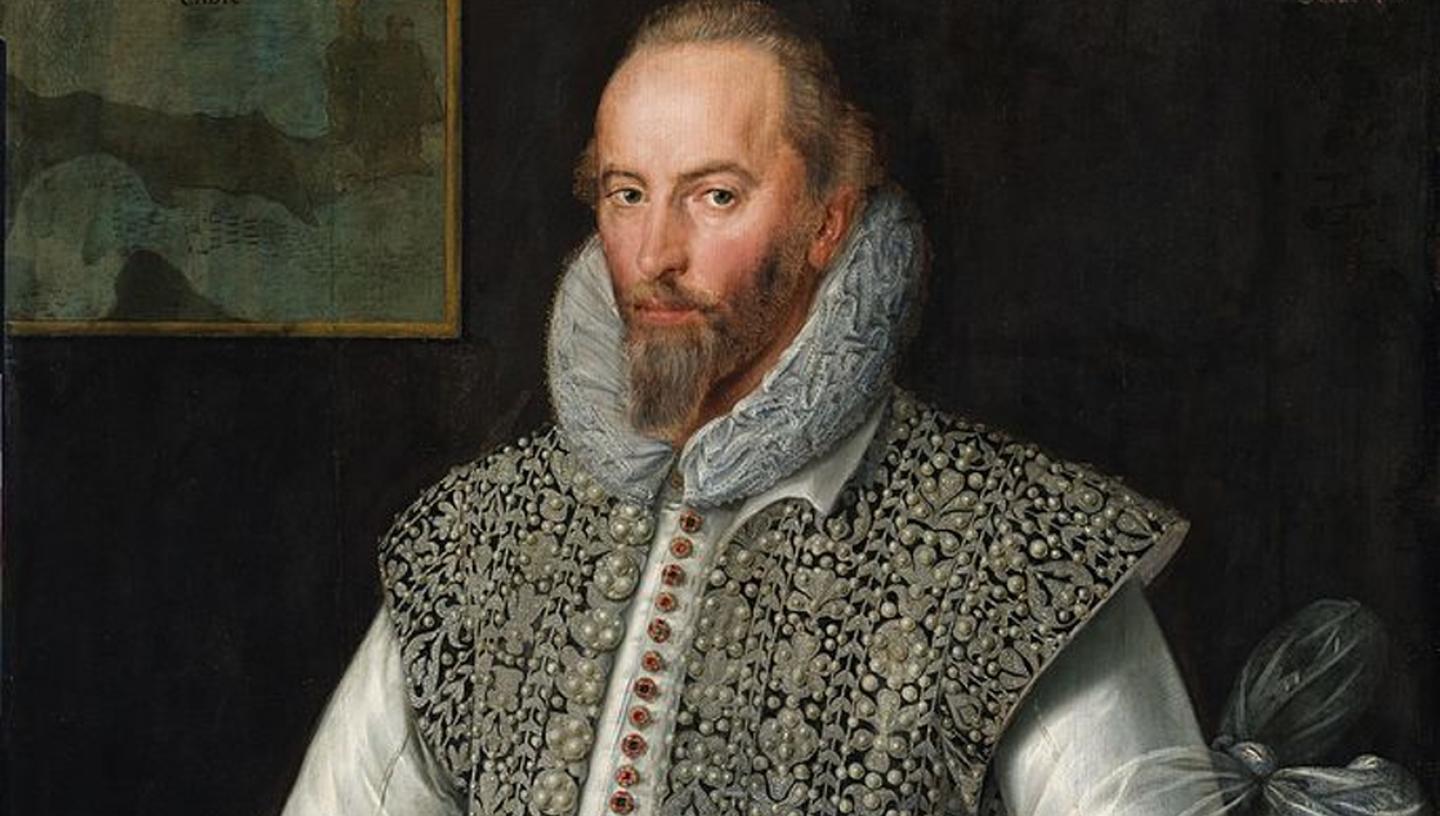
Sir Walter Raleigh
Walter Raleigh (1544–1618) was a courtier, seaman and explorer in Elizabethan England. He was a pioneer in the English colonisation of North America.
Raleigh (orginally spelt Ralegh) was a favourite of Queen Elizabeth I and helped defend England against the Spanish Armada. As well as being a courtier and explorer, he was also a keen philosopher, historian and poet.
Walter Raleigh and Queen Elizabeth I
Raleigh was the son of a Devonshire squire but his family had important connections. One of these was his half brother Humphrey Gilbert, an explorer and adventurer. Raleigh was ambitious and knew that to gain the notice of the Queen he had to prove himself as a soldier and explorer. For this reason he also went to Ireland (where his family had land) and quelled a rebellion there. These exploits, and his prowess as a poet, enabled him to join the inner circle at Court. Elizabeth I knighted him and he was appointed Captain of the Queen’s Guard in 1587.
Raleigh founds ‘Virginia’
When Humphrey Gilbert died while returning from an attempt to colonise North America, Raleigh was keen to take up his cause. He commissioned and financed an expedition that landed on the North American coast. They named the territory Virginia, in the name of the Virgin Queen (as Elizabeth was known).
Raleigh sent a second expedition in 1585 and a third in 1587, with the intention of establishing a British settlement in America on Roanoke Island, in modern North Carolina. Unfortunately the colonisation failed due to hostile relations with the native ‘Indians’ and lack of provisions.
Raleigh popularises tobacco
Walter Raleigh is given credit for introducing both tobacco and potatoes to Britain, although both of these were already known from Spanish explorers. Raleigh certainly helped to make smoking popular at court and was convinced tobacco was a good cure for coughs.
The Spanish Armada
Raleigh was interested in seamanship and navigation. With his wealth he built a warship, which he named the Ark Ralegh. He later gave this to Queen Elizabeth I who changed the name to the Ark Royal. This ship later became the flagship of the English fleet, which fought against the Spanish Armada under the command of Lord Howard of Effingham. Although Raleigh did not command a ship, he was the Queen’s naval adviser and helped Sir John Hawkins to implement improvements to the design of ships, an important factor in the success of the English fleet against the Spanish.
Raleigh’s search for El Dorado
Despite Elizabeth I’s anger at Raleigh marrying her lady-in-waiting, Elizabeth Throckmorton, behind her back (which led to their imprisonment in the Tower of London), she did consent to him leading an expedition to discover the fabled land of El Dorado. This ‘Golden Land’ was believed to be situated somewhere beyond the mouth of the Orinoco river in Guiana, now Venezuela. But, Raleigh’s mission in 1594 was to be unsuccessful and he was forced to abandon his plans.
After Queen Elizabeth I’s death
When King James followed Queen Elizabeth I on to the throne in 1603, Raleigh fell from favour and was again imprisoned in the Tower of London. He spent his time there pursuing experiments and writing The Historie of the World (1614).
Raleigh’s final expedition and execution
In 1616, Raleigh was released to lead a second expedition to find El Dorado. While there, his men attacked a Spanish settlement, resulting in the death of Raleigh’s son Walter. On his return to England, Raleigh was arrested and sentenced to death to appease the Spaniards. He was beheaded outside the Palace of Westminster on 29 October 1618.